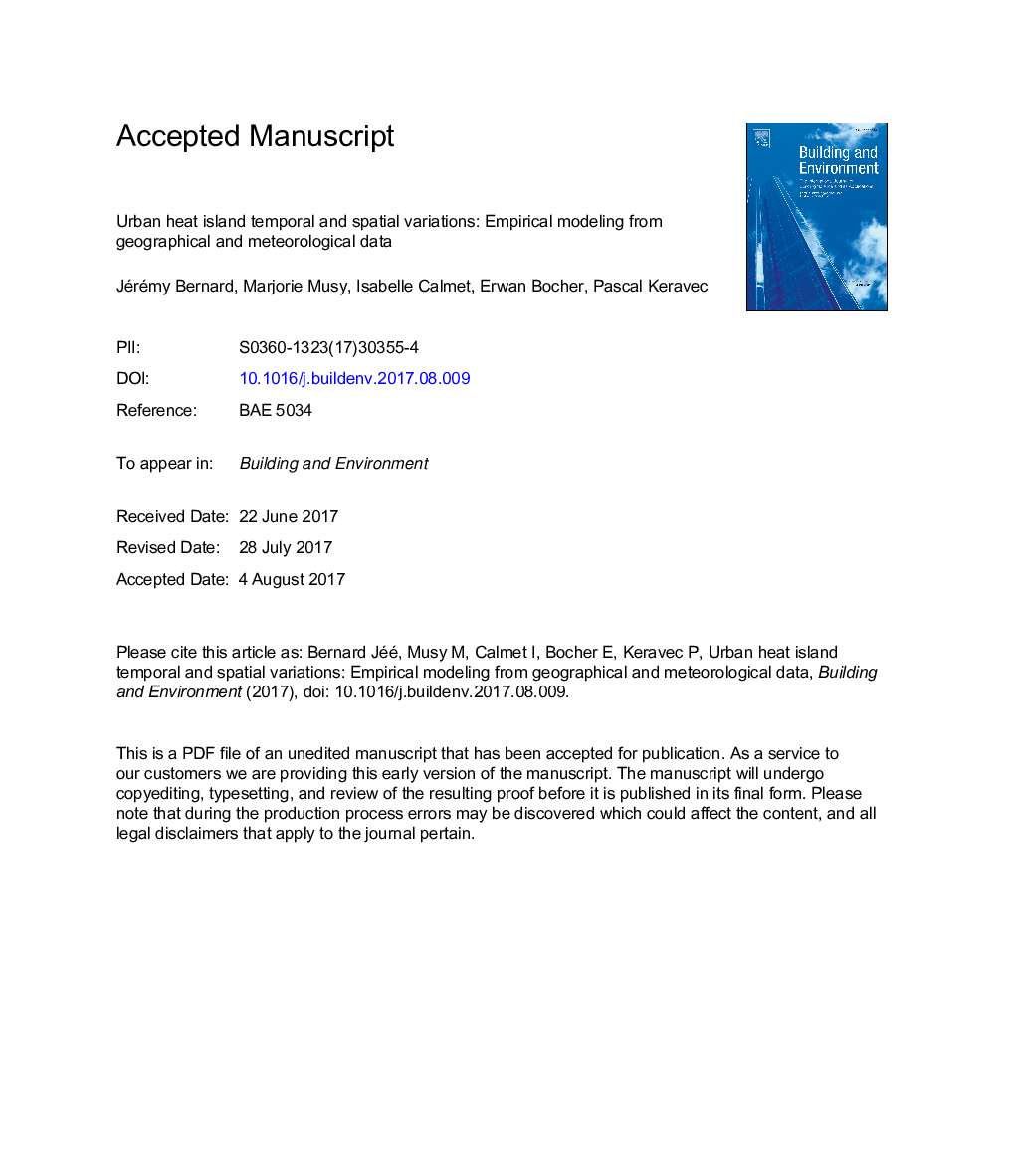| Article ID | Journal | Published Year | Pages | File Type |
|---|---|---|---|---|
| 6698573 | Building and Environment | 2017 | 33 Pages |
Abstract
Urban air temperature varies along time and space. This contribution proposes a methodology to model these variations from empirical models. Four air temperature networks are implemented in three west France cities. The period [1.4-1.8] of a normalized night is investigated. Three empirical models are established, in order to predict temporal and spatial air temperature variation. They are gathered under the name of model group. Urban heat island (UHI) intensity is explained according to one temporal model using meteorological variables. Temperature spatial variations are explained from two models using geographical informations averaged in a 500Â m radius buffer circle. The first one represents the mean UHI value for a given location, the second the variability of the UHI around its mean value. 32 model groups are calibrated from data sampled by one network. The accuracy of their estimations is tested comparing estimated to observed values from the three other networks. The most accurate model is identified and its performances are analyzed. Night-time UHI intensity variations are explained all along the year by wind speed and nebulosity values calculated after sunset. During spring and summer season UHI variations are mainly driven by Normalized Difference Vegetation Index (NDVI) value whereas building density or surface density are predominant explicative variables during colder seasons. The model is finally applied to the city of Nantes during a summer night to illustrate the interest of this work to urban planning applications. Several warm areas located outside the city center are identified according to this method. Their high UHI value is mainly caused by their low NDVI value.
Related Topics
Physical Sciences and Engineering
Energy
Renewable Energy, Sustainability and the Environment
Authors
Jérémy Bernard, Marjorie Musy, Isabelle Calmet, Erwan Bocher, Pascal Keravec,
